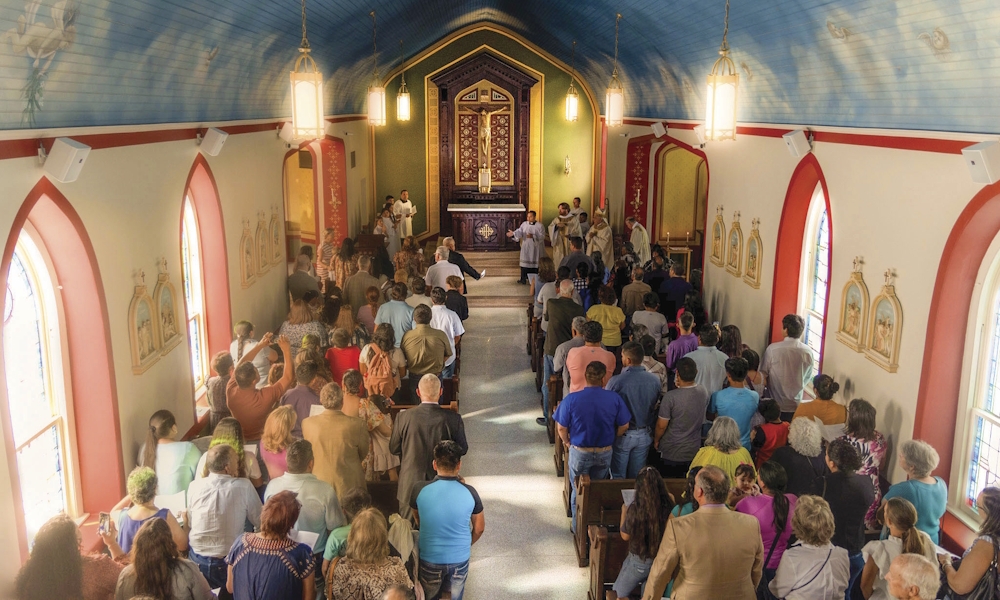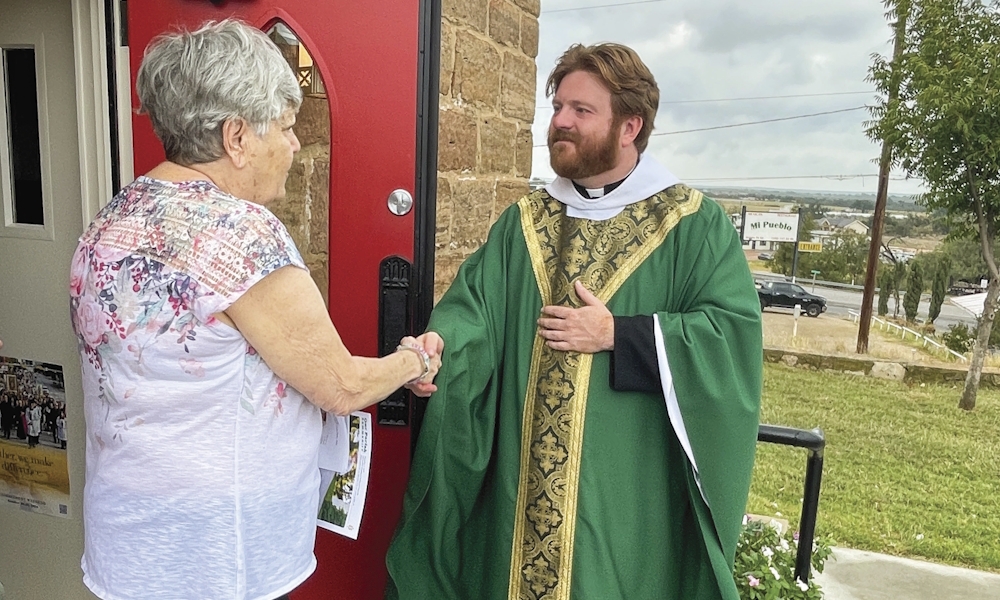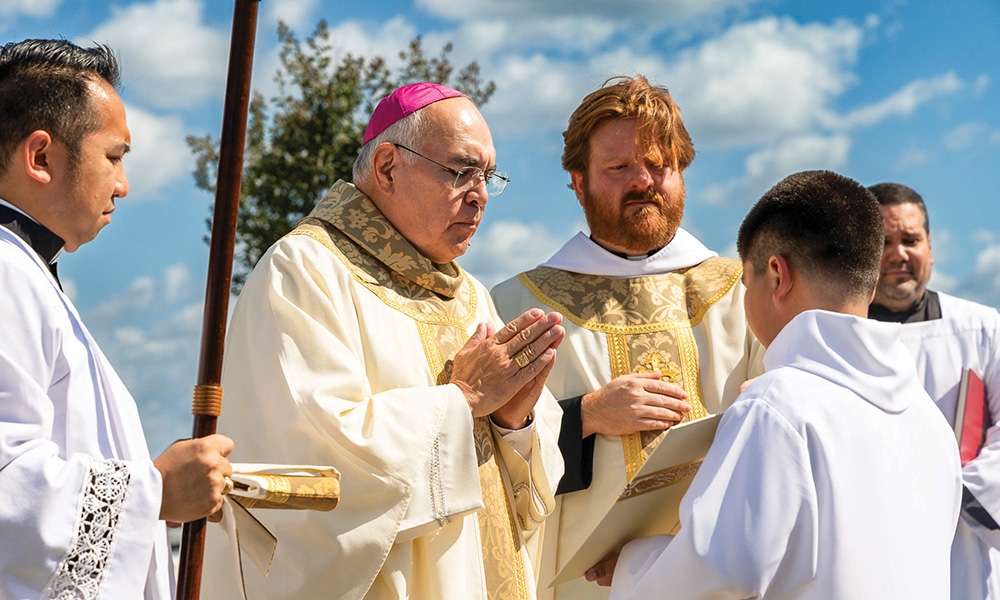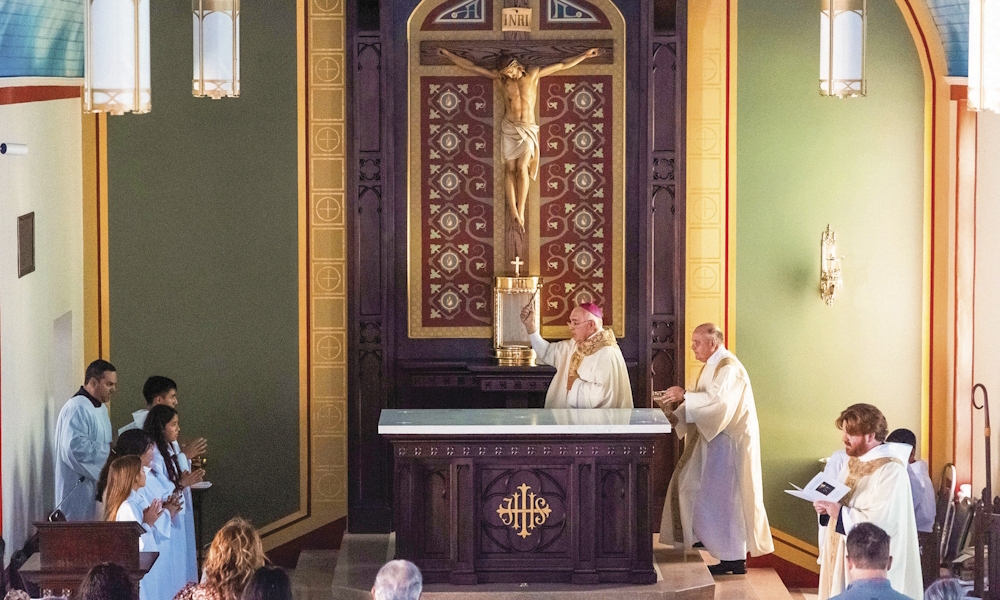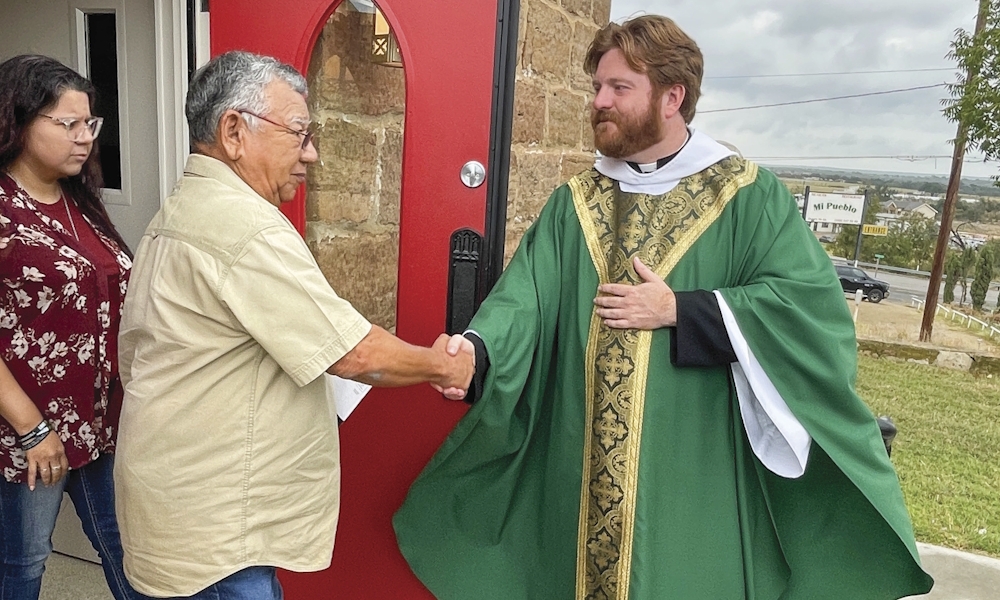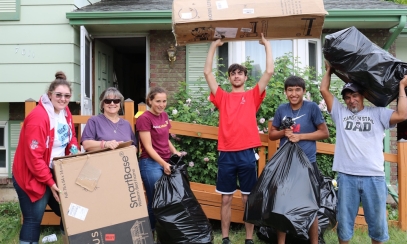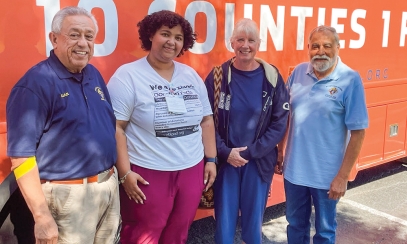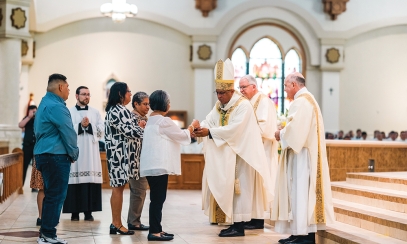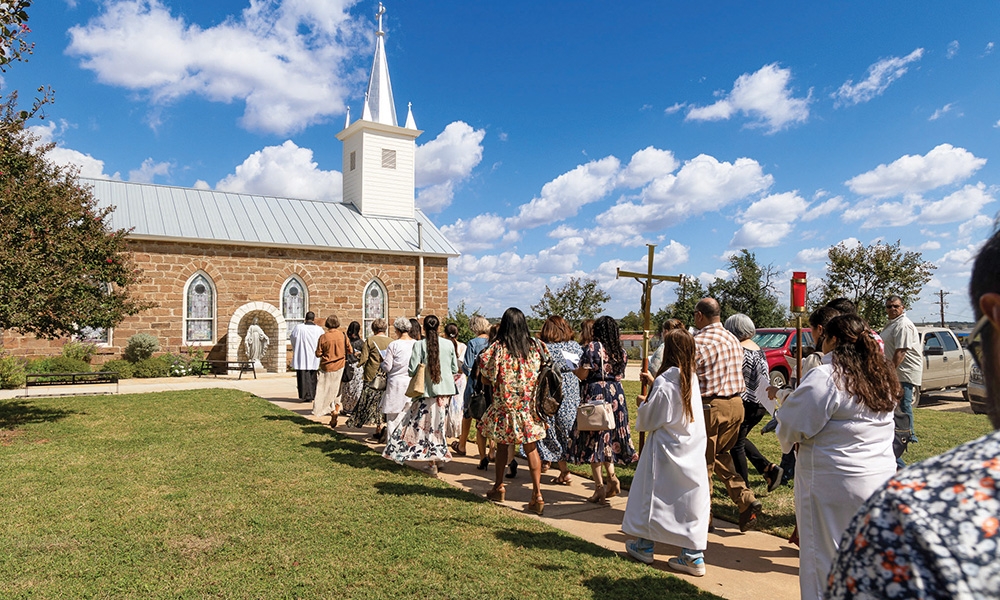
St. Joseph in Mason celebrates more than 150 years of nurturing the faith
Two years after marking its sesquicentennial, St. Joseph Parish in Mason continues to revamp itself as a vibrant parish in the far western reaches of the Diocese of Austin. Last October, Bishop Joe Vásquez celebrated Mass and dedicated a new altar and the recently renovated spaces at the historic church, which was founded in 1872.
Two years after marking its sesquicentennial, St. Joseph Parish in Mason continues to revamp itself as a vibrant parish in the far western reaches of the Diocese of Austin. Last October, Bishop Joe Vásquez celebrated Mass and dedicated a new altar and the recently renovated spaces at the historic church, which was founded in 1872.
In 1851, a “red-headed” priest named Father M. J. Fairer rode into Mason on a “hack drawn by two mules” to bring the Catholic faith to the new town. One hundred sixty-eight years later, in July 2020, another red-headed priest, Father Payden “Red” Blevins, became the latest of a long line of dedicated holy men who have ventured into the Texas Hill Country to nurture the faith.
“Father Red,” as his parish community knows him, found a faith community that had been in population decline experiencing renewal due to an upsurge of Hispanic arrivals and urban dwellers seeking refuge from the growing metropolises in Travis and Williamson counties. The church, built in 1873, had undergone several preservation efforts through the years, but time and nature demanded more.
After evaluating the condition of the building, Father Red realized that the electrical system was not up to code and the wood was warped and deteriorating. Moreover, water had seeped into several areas of the original stonework, causing the plaster to peel. In the part of the church added in 1963, the stone exterior had fallen apart. This extension added a drop ceiling and pendant lights down to the sides and, in the process, covered angels that had been painted on the ceiling in 1916.
“Every time something was changed, it was done in the style of what was contemporary at that time,” Father Red said. The 1916 ceiling fused with 1963 renovations and an altar and tabernacle from 1979.
After a thorough assessment, Father Red and the pastoral and finance councils determined the improvements to upgrade and restore the church would cost $500,000. Fortunately, the parish received a generous bequest from a family estate and parishioners raised $100,000 through a local capital campaign, making it unnecessary for the parish to go into debt to complete the renovation.
In their desire to preserve and restore the church, Father Red and parish leaders contracted with two outside sources for help. The Stabat Mater Foundation in East Texas provided artists to stencil parts of the renovation, including church walls. After finishing the walls, they did a tree of life mural behind the crucifix that was then adhered to a board behind the altar.
The parish also worked with the Illinois group Murals by Jericho, which specializes in restoring sacred spaces. In 1916, local parishioner Manuel Lopez painted the ceiling with clouds, stars, angels and a dove. This mural was covered by the 1963 additions but revealed by the latest construction. The group restored the ceiling to its original condition.
“Before the project began,” Father Red said, “we took detailed pictures of the ceiling, making sure that we had a clear picture of each angel. As we removed the damaged ceiling, we preserved the still-intact images,” Father Red said. Murals by Jericho used these pictures to restore images on the ceiling and extend them to the part of the ceiling added in 1963.
The newly blessed altar also includes the relics of three saints: St. Faustina, St. Padre Pio and Blessed Pier Giorgio Frassati, who is of particular interest to the youth of the parish and will be canonized this summer. Relics are physical reminders of faith and inspire devotion and prayer to that saint. In addition, the church also features a statue of Blessed Stanley Rother, the first American-born Catholic martyr. Originally from the Archdiocese of Oklahoma City, Father Rother served the indigenous population in Guatemala, where he was executed by rebels in 1981.
Twenty years ago, St. Joseph saw an aging population, and its Hispanic community could not support the Spanish Mass the parish had added. The Spanish Mass is back today, and the parish is growing moderately, Father Red said.
During his bilingual homily, Bishop Vásquez urged the congregation to emulate their patron saint, St. Joseph, during his homily in October. The Bible contains no word spoken by St. Joseph, but “his actions spoke boldly,” the bishop said. “You don’t have to say a lot; just put into practice what Christ asks of you.”
Alfredo E. Cárdenas began as a freelance writer for the Catholic Spirit in 2000, writing histories of parishes. In 2010, he was named editor of the South Texas Catholic, a publication of the Corpus Christi Diocese. Upon his retirement in 2017, he returned to Austin, where he resumed writing for the Catholic Spirit.

